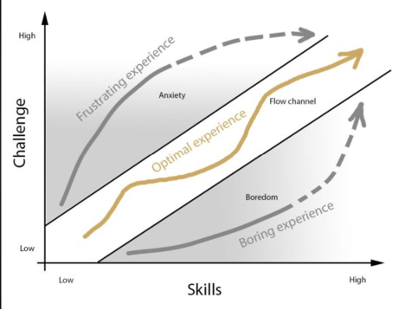

It’s estimated that the average consumer will see 6,000–10,000 marketing messages a day. Another study shows that 86% of consumers suffer from “Banner Blindness”: they avert their eyes away from advertising. Currently, approximately 25.8% of users (mostly younger) have installed Adblockers.
Meanwhile, online gaming is growing exponentially. Today there’s an estimated one billion online gamers worldwide, and that’s projected to grow to 1.3 billion by 2025. That’s a lot of eyeballs turning towards games – and away from traditional advertising and marketing. It only makes sense to explore the potential of how leveraging the elements of games, and game mechanics, can make your marketing more powerful.
At the heart of gamification is a user experience that is fun, challenging, relaxing, and engaging. Isn’t that the kind of experience you want your customers to have? Learning how to implement this powerful user experience in your marketing will help build sales, subscribers, and customer loyalty.
According to a team of researchers at the University of Waterloo:
“Gamification is the use of game elements in applications that are not games. For example…[using] quests, stories, and badges, to motivate users to interact with a product, system, or service.”
Gamification’s appeal to people’s love of rewards, leveling up, and competition is undeniable. It provides a way for brands to build relationships with their target audience and influence their decisions. A report from DMWF shows that 60% of consumers said they would be more likely to buy from a brand if they enjoyed playing a game with it.
Designing a successful gamification strategy starts with a deeper understanding of your customers or users. There are some design decisions based upon rudimentary demographics: age, gender, and education level. A millennial might like a very different type of game than a baby boomer. Quizzes and trivia games must at minimum have questions that are specifically relevant to each user group.
To effectively add gamification to your marketing, you might consider how the game industry divides players. One of the tools the industry uses is the Bartle Test of Game Psychology. After thousands of people took the test, four main groups of players emerged:
Through this lens, you might make different content and design decisions. An athletics company, for example, might create a competitive sports game for “Killers,” and a trivia game for “Achievers,” who thrive on knowing sports statistics; while an airline might appeal to “Explorers” by creating not-for-tourist virtual tours of cities and countrysides, replete with easter eggs and other surprises – all while gaining points or frequent flyer miles with every tour they complete.
In a perfect world, the goal of gamification is to induce what game designers call a “Flow State.” Flow States happen when people are so engrossed in an activity that they lose sense of time and no other activity matters. While in this mental state of flow, self-consciousness can fade and the sense of time can become distorted.


Creating Flow starts by developing a series of tasks that are challenging and fun, but calibrated to the user’s specific capabilities. There is a relationship between challenges and skills. If the challenge is too difficult, user experience becomes frustrating. If the task is too easy, users become bored and are likely to quit. While marketers may not aim to achieve quite the same level of Flow, we do want to reach a maximum level of consumer engagement – and gamification can help you get there.
These days, for good reasons, there’s a growing drumbeat of privacy concerns that’s limiting the data that marketers can collect about their customers, from GDPR to CCPA and more recently, the end of third-party cookies. Gamification can broaden your company’s data landscape. It gives customers reasons to allow their data to be used. If they want to play, they will very often willingly give their data to participate.
Gen Z will comprise 32% of the global population of 7.7 billion. Among Gen Z consumers in the U.S. (those currently aged 14-24), video games are their number-one entertainment activity — and watching TV or movies at home comes in fifth. Being relevant to this large and growing generation of consumers means being fluent in gaming and gamification – and applying these tactics to your marketing.
While Selligent is not a gamification platform, our omnichannel, AI-powered platform and real-time data can be used to help boost the impact of your brand’s creative gamification techniques. With your games as the campaign content, our AI can help determine who you send what games to, and when, to help ensure that your gamification content is delivered to the right person, at the right level, at the right time. Our marketing automation features can help to interpret the games you set up, react to results and engagement, and optimize customers’ responses to gamification content – all in real time.
“De Mol” (“The Mole”) is a hit Belgian TV show on SBS’ Play4 channel. Viewers follow hints and clues and then vote for which players are “Moles,” who are trying to sabotage other players.
For the 2020 series, SBS wanted to revamp the online voting platform, to provide a better, more seamless, and personalized user experience. Working with digital agency Emakina and utilizing Marigold Engage, SBS built a new voting system within Selligent and developed an engaging digital campaign to heighten viewer experience. Selligent’s key functionalities were used to:
You can read the full story about SBS and “De Mol” here.
Gamification is just one of the ways Selligent can help boost your marketing through the power of AI, real-time data, and automation. We’d be happy to show you more. To learn more, request a demo.
Marigold: where relationships take root.